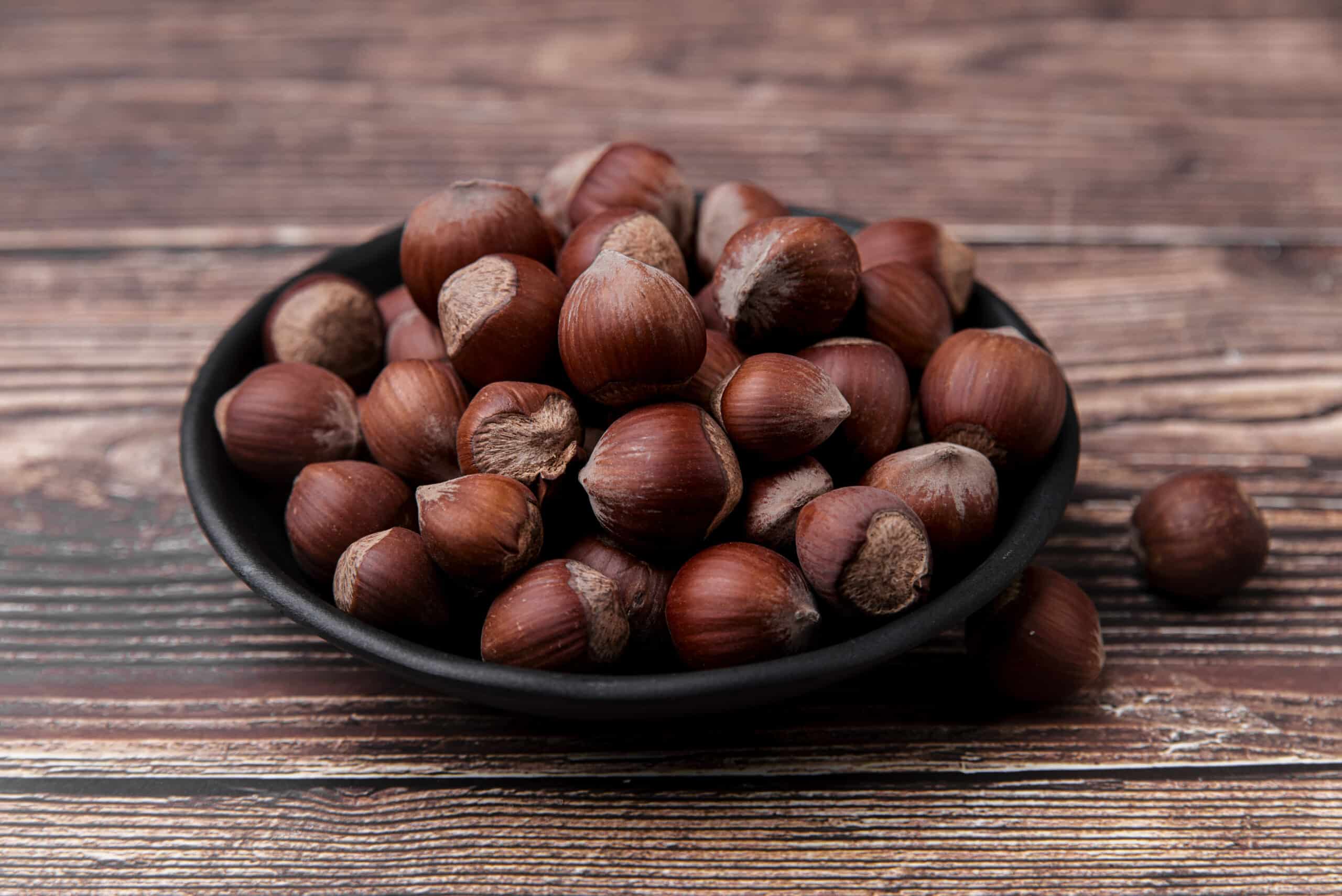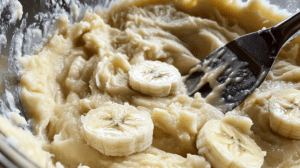Roasted chestnuts are a classic winter treat that brings to mind cozy nights by the fire and festive holiday markets. If you’ve never tried them, you might wonder: Are roasted chestnuts any good? The answer depends on personal taste, but there’s no denying the unique flavor and texture that many people love.
Introduction to Roasted Chestnuts
People have enjoyed roasted chestnuts for centuries, especially during the colder months when they’re often sold by street vendors or roasted at home as a festive tradition. Roasting chestnuts brings out their natural sweetness, turning them from hard, raw nuts into soft, warm bites of comfort. According to La Cucina Italiana, chestnuts are more than just a treat; they play a significant role in holiday celebrations, particularly in Italy, where they’re often roasted over an open fire.
Roasted chestnuts have a mild, slightly sweet flavor, and their texture is more like a cooked potato than a crunchy nut. This soft texture makes them a unique snack, different from other nuts like almonds or walnuts. Roasting also adds a hint of smokiness, especially if they’re roasted over an open fire, enhancing their taste.
Moreover, roasted chestnuts aren’t just tasty; they’re also good for you. WebMD highlights that chestnuts are lower in fat than most other nuts and rich in vitamins and minerals, making them a healthy addition to your diet. Whether you enjoy them on their own, with a drink, or as part of a recipe, roasted chestnuts have much to offer.
For more tips on roasting chestnuts, check out the article on how to roast and peel chestnuts at home, which provides a comprehensive guide.
What Do Roasted Chestnuts Taste Like?
Flavor Profile
Roasted chestnuts taste different from most other nuts. They’re mildly sweet with a hint of nuttiness, but their texture really sets them apart. Unlike most nuts, which are crunchy, roasted chestnuts are soft and almost spongy, similar to a baked potato. This makes them a delightful snack for those who prefer softer foods.
Comparison to Other Nuts
Compared to other nuts, roasted chestnuts stand out not just for their texture but also for their lower fat content. While almonds, walnuts, and peanuts are rich and oily, chestnuts are starchy and light. This difference in texture and flavor makes roasted chestnuts versatile in both sweet and savory dishes.
For more ideas on using roasted chestnuts in your meals, you might find the post on how to make homemade protein bars useful, especially when considering healthy snack options.
Factors Affecting Taste
Several factors can affect the taste of roasted chestnuts, including the quality of the chestnuts and the roasting method. Fresh, well-stored chestnuts have a sweeter, more pronounced flavor. The roasting method also matters—roasting over an open fire can add a smoky flavor, while oven roasting results in a milder taste.
Nutritional Value of Roasted Chestnuts
Calories and Macronutrients
Roasted chestnuts are lower in calories than other nuts, making them a great snack for those watching their calorie intake. A serving of roasted chestnuts (about 10 nuts) contains around 70-100 calories. They are primarily made up of carbohydrates, with very little fat and a modest amount of protein.
Vitamins and Minerals
Chestnuts are a good source of several essential vitamins and minerals, including vitamin C, which is rare in nuts. They also provide manganese, copper, and magnesium, all of which are important for healthy bones and overall bodily functions. Although roasting reduces their vitamin C content, chestnuts remain a good source of antioxidants.
Health Benefits
In addition to being low in fat, chestnuts are high in dietary fiber, which aids digestion and helps maintain a healthy weight. Their antioxidant properties help combat oxidative stress in the body, contributing to overall health. The minerals in chestnuts, such as manganese and copper, support bone health and the immune system.
If you’re interested in other nutritious options, the article on fresh fruit bowls offers insights into maintaining a healthy diet with delicious alternatives.
How to Roast Chestnuts
Selecting the Right Chestnuts
To get the best flavor and texture, start with high-quality chestnuts. Look for chestnuts that are firm, heavy for their size, and free from blemishes or mold. Fresh chestnuts have a slight shine and should not rattle when shaken.
Preparation Steps
Before roasting, chestnuts need proper preparation. First, rinse them under cold water to remove any dirt. Then, use a sharp knife to score an “X” on the flat side of each chestnut. This step is crucial because it allows steam to escape during roasting, preventing the chestnuts from bursting.
Roasting Methods
There are several methods to roast chestnuts:
- Oven Roasting: Preheat your oven to 425°F (220°C). Place the scored chestnuts on a baking sheet, flat side down, and roast for 20-30 minutes. Shake the pan occasionally to ensure even cooking.
- Open-Fire Roasting: For a traditional approach, roast chestnuts over an open fire. Place the chestnuts in a roasting pan or a chestnut roaster and hold them over the fire, shaking the pan frequently. The chestnuts are ready when the shells are charred, and the nuts inside are tender.
For a comprehensive guide on roasting, explore the Roasted Chestnuts Guide.
Common Problems with Roasted Chestnuts
Texture Issues
Roasted chestnuts sometimes turn out too dry, too hard, or too mushy. These issues often result from improper roasting techniques or low-quality chestnuts. Using fresh, high-quality chestnuts and preparing them properly before roasting can help avoid these problems.
Peeling Difficulties
Peeling roasted chestnuts can be tricky, especially if they haven’t been scored deeply enough or if they weren’t soaked before roasting. To make peeling easier, let the chestnuts cool slightly, then peel them while they’re still warm. The shell and inner skin should come off easily if the chestnuts are roasted properly.
How to Serve and Enjoy Roasted Chestnuts
Serving Suggestions
Roasted chestnuts are versatile and can be enjoyed in many ways:
- As a Simple Snack: Enjoy them warm, straight out of the oven or off the fire.
- Paired with Beverages: Roasted chestnuts pair well with wine, coffee, or hot chocolate, making them a perfect accompaniment to a cozy evening by the fire.
- Incorporating into Recipes: Add roasted chestnuts to stuffing, soups, salads, or desserts for a rich, nutty flavor.
Pairing with Beverages
The mild sweetness of roasted chestnuts pairs wonderfully with various beverages. A glass of red wine or a cup of hot coffee can enhance the chestnuts’ flavors, making for a delightful combination. For those who prefer something non-alcoholic, hot chocolate is a perfect pairing, offering a comforting contrast to the chestnuts’ nutty flavor.
Incorporating into Dishes
Roasted chestnuts can be used in a wide range of dishes, from savory to sweet. They add a rich, earthy flavor to stuffing and soups, and they can also be used to make a delicious chestnut puree for desserts. Their versatility makes them valuable in both traditional and modern recipes.
Roasted Chestnuts in Different Cuisines
Italian Tradition
In Italy, roasted chestnuts are a cherished holiday tradition. They are often sold by street vendors during the winter months and are a common sight at holiday markets. Italian cuisine also incorporates chestnuts into various dishes, including pasta, soups, and desserts.
Asian Street Food
Roasted chestnuts are also popular in East Asian countries, particularly in China, Japan, and Korea. They are commonly sold by street vendors and enjoyed as a warm snack during the colder months. The roasting method and the types of chestnuts used may vary, but the love for this seasonal treat is universal.
Modern Takes
In recent years, roasted chestnuts have found their way into modern cuisine, with chefs experimenting with new ways to incorporate them into dishes. From chestnut risotto to chestnut-flavored desserts, there are countless ways to enjoy this classic nut in contemporary cooking.
Frequently Asked Questions (FAQ)
Are roasted chestnuts healthy?
Yes, roasted chestnuts are a healthy snack. They are low in fat, high in fiber, and rich in essential vitamins and minerals. They are also a good source of antioxidants, which help protect the body from oxidative stress.
How do you store roasted chestnuts?
Store roasted chestnuts in an airtight container in the refrigerator. They can last up to three days. To reheat, place them in a warm oven until heated through. You can also freeze roasted chestnuts for longer storage.
Can you roast chestnuts at home without an open fire?
Yes, you can easily roast chestnuts in the oven at home. Simply score the chestnuts, place them on a baking sheet, and roast them at 425°F (220°C) for 20-30 minutes.
What are the best ways to peel roasted chestnuts?
To peel roasted chestnuts, allow them to cool slightly, then peel them while they are still warm. The shell and inner skin should come off easily if they were scored and roasted properly.
Why do some people not like roasted chestnuts?
Some people may not enjoy roasted chestnuts due to their unique texture, which is soft and spongy rather than crunchy. The mild flavor may also be less appealing to those who prefer stronger-tasting nuts.
Conclusion and Final Thoughts
Roasted chestnuts are a classic treat with a unique flavor and texture that has been enjoyed for centuries. Whether you’re drawn to their mild sweetness, their nutritional benefits, or their versatility in cooking, there’s a lot to love about roasted chestnuts. While they may not be for everyone, those who appreciate their distinct qualities will find them to be a delicious and healthy addition to their diet.
If you haven’t tried roasted chestnuts before, consider giving them a try this winter. Experiment with different roasting methods and pairings to discover what works best for you. Whether enjoyed on their own, with a favorite beverage, or as part of a recipe, roasted chestnuts are a seasonal delight worth exploring.





